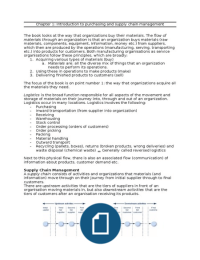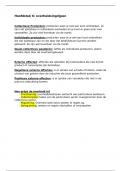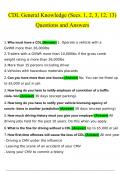Samenvatting
Summary Monczka et al. (2010) - Purchaing & Supply Chain Management
- Instelling
- Universiteit Twente (UT)
Summary study book Purchasing & Supply Chain Management of Monczka - ISBN: 9781408017449, Edition: 1, Year of publication: 2010 (Summary of the book)
[Meer zien]








